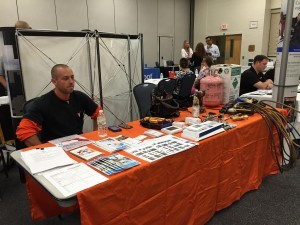When spring comes around and the weather starts its climb toward the highs of summer, you need to start thinking about preparing your home’s air conditioner for the hot times ahead. ACs in Florida undergo intense work during the long summer seasons, and without maintenance from an HVAC professional to reduce wear and tear, they run the risk of poor performance, energy waste, repair issues, and even a complete breakdown leading to an early replacement. Make sure that you avoid all these problems and sign up for AC system maintenance in Ponte Vedra, FL. Call Climate Masters today and ask about our excellent maintenance program, which will also care for your heating system during the fall.
What AC maintenance entails
Although there are a number of different types of air conditioning systems for homes, they have enough similarities that most technicians will follow the same set up steps when taking care of maintaining them.
First, the technician will check on the outdoor condensing unit and the compressor to see that it has the correct operating pressure. (The compressor is perhaps the most essential component in an AC; if the compressor burns out, often the whole system much be replaced.) The technician will also take care of cleaning the condensate line and drain in the condensing unit and checks on the temperature rise across the condensing coil. If the condensing coil is dirty, the technician will detach it and wash it.
Next, the technician will check on the electrical systems of the AC, tightening any loose connections and looking for correct motor amperage and. This check also includes the thermostat to make sure that it is correctly calibrated and wired to the air conditioner.
After this, the technician will see if there is sufficient refrigerant in the system and replace any missing amount. (In some cases, refrigerant is overcharged, meaning there is too much, and the technician must remove some.)
The maintenance then focuses on the indoor cabinet, and takes care of replacing the air filter, cleaning the air handler, and seeing if the evaporator coil is in good shape. To finish, the technician will lubricate any motors that require it.
If the technician notices a repair issue at any point, he or she will notify you of it and help you arrange to have it fixed. The technician will not attempt to do any repairs unless you approve them.
The maintenance program from Climate Masters will not only keep your air conditioning sytem in great shape, it will also provide you with a 10% discount on repair costs (excluding compressors, filters, or full system replacements).
Contact us today to sign up in Ponte Vedra, FL for AC system maintenance so you will be ready for another summer.
Continue Reading
Tags: AC System Maintenance, Ponte Vedra
Posted in Air Conditioning, Our Maintenance Plan | Comments Off on AC System Maintenance Steps: A Basic Overview

 Recently, the local Tech College, First Coast Technical College, held a job fair for its recent grads and Climate Masters setup a booth to educate the participants about the world of HVAC and all of the great employment opportunities in this community and at our business! Our Service Manager, Jeff Gwaltney and Service Technician James Carnall, were on hand to chat with students and teachers and give them an idea of what the industry has to offer as well as our business. They had a great time and we would like to thank everyone from the college staff to the students and graduates for participating with us. Check out our pictures and the great write up on the event and call us today to find out how you can
Recently, the local Tech College, First Coast Technical College, held a job fair for its recent grads and Climate Masters setup a booth to educate the participants about the world of HVAC and all of the great employment opportunities in this community and at our business! Our Service Manager, Jeff Gwaltney and Service Technician James Carnall, were on hand to chat with students and teachers and give them an idea of what the industry has to offer as well as our business. They had a great time and we would like to thank everyone from the college staff to the students and graduates for participating with us. Check out our pictures and the great write up on the event and call us today to find out how you can 






